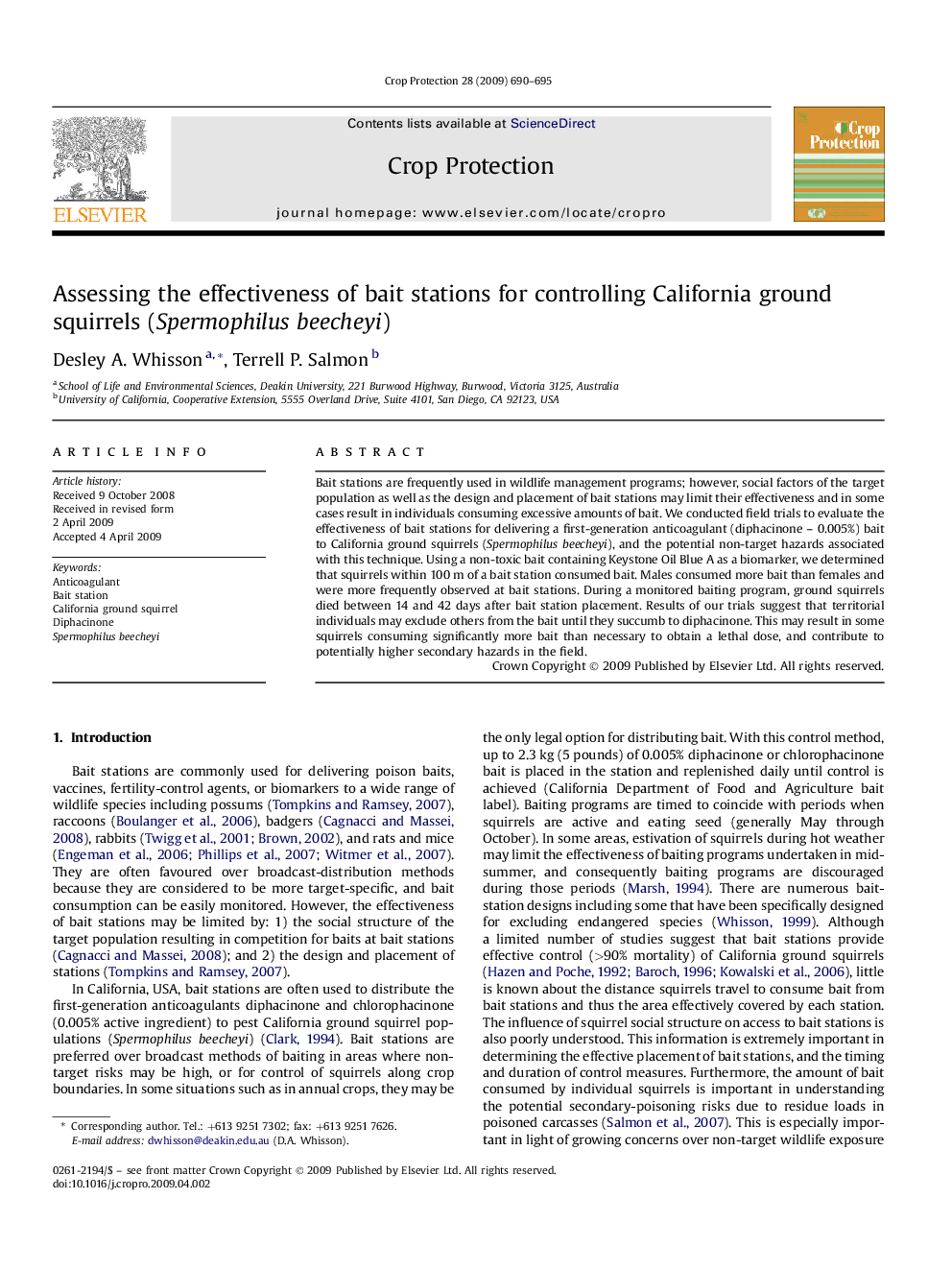| Article ID | Journal | Published Year | Pages | File Type |
|---|---|---|---|---|
| 4507415 | Crop Protection | 2009 | 6 Pages |
Bait stations are frequently used in wildlife management programs; however, social factors of the target population as well as the design and placement of bait stations may limit their effectiveness and in some cases result in individuals consuming excessive amounts of bait. We conducted field trials to evaluate the effectiveness of bait stations for delivering a first-generation anticoagulant (diphacinone – 0.005%) bait to California ground squirrels (Spermophilus beecheyi), and the potential non-target hazards associated with this technique. Using a non-toxic bait containing Keystone Oil Blue A as a biomarker, we determined that squirrels within 100 m of a bait station consumed bait. Males consumed more bait than females and were more frequently observed at bait stations. During a monitored baiting program, ground squirrels died between 14 and 42 days after bait station placement. Results of our trials suggest that territorial individuals may exclude others from the bait until they succumb to diphacinone. This may result in some squirrels consuming significantly more bait than necessary to obtain a lethal dose, and contribute to potentially higher secondary hazards in the field.
